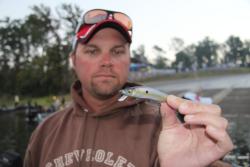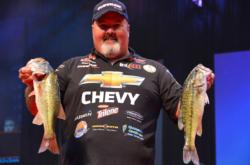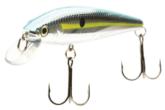Jerkbait guide
Choosing the proper jerkbait for varying springtime conditions
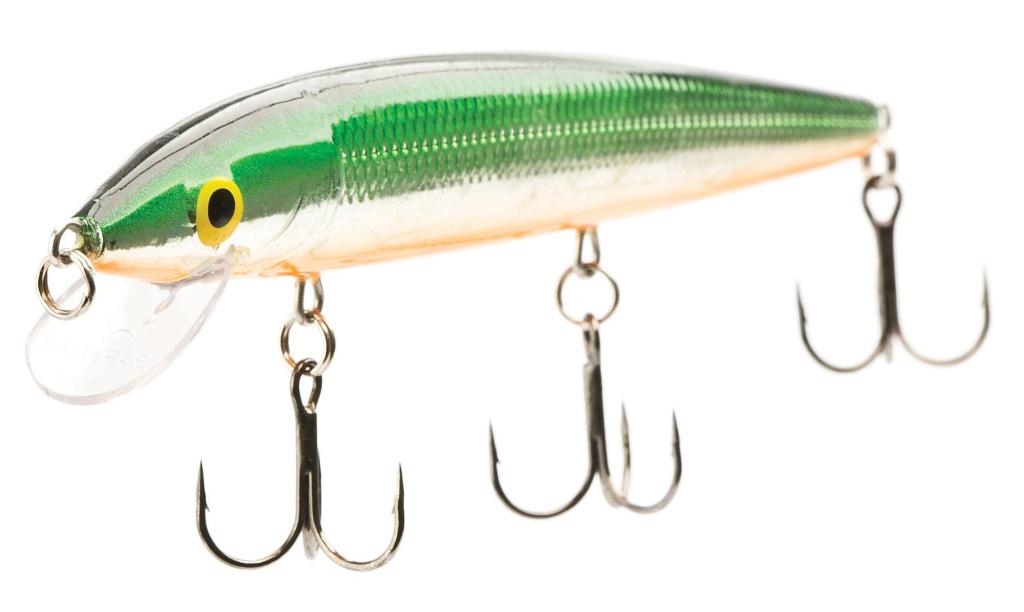
(Editor's note: This article originally appeared in the 2013 March issue of Bass Fishing magazine. To read more compelling articles from Bass Fishing magazine each month, become an FLW subscriber member. If you'd like to sign up for a digital subscription to access articles online, click here).
Take in an early spring tournament on just about any fishery, and you’ll see dozens of anglers jerking, twitching and snapping a bevy of slender minnow-shaped jerkbaits. Yet the same select and relatively small group of anglers usually cashes the bulk of the checks on many lakes during the spring. Somehow, they manage to set themselves apart.
“It’s a very subtle thing,” Chevy pro Dion Hibdon says about jerkbait fishing. “You have to pay attention to conditions and what the fish show you to figure how to present the bait, how long to pause it, which bait to throw …”
Pretty high on the list of variables is the jerkbait itself, and determining which jerkbait to throw begins with an understanding of jerkbait distinctions. That said, there’s more than a little art blended with the science.
When viewed in a tackle box tray, most jerkbaits appear to be similar. When they’re set in motion, however, it’s a different picture. Actions range from subtle to erratic, and the same twitch would impart a totally different action on two lures that seem identical. Categorizing jerkbaits by action is difficult. Most don’t fit neatly into categories, but fall somewhere in between, and their action is governed to a large extent by the way an angler manipulates them.
Consequently, it’s difficult to define any jerkbait’s default action. That said, certain jerkbaits definitely work better than others for achieving particular motions and have distinctive traits that enable them to excel in specific situations. Understanding those distinctions and how to take advantage of them can impact lure selection and success rate. On the next two pages is a look at some of the common traits that various categories of jerkbaits possess.
Buoyancy and balance
Floating, sinking and suspending jerkbaits clearly all have their place in a year-round bag of tricks. Floaters permit you to walk an offering over grass that hasn’t topped out, to twitch a minnow across the surface and to otherwise work shallow water. Sinkers allow you to control presentation depths and drop deeper in the water column.
However, when the subject is jerkbait fishing for prespawn bass in spring, we’re talking mostly about suspending jerkbaits. When winter-slowed fish stage for the spawn and feed on chilled baitfish, the best tool for the task is one that can do a dance and then hang in the strike zone, whether that’s only for a moment or for what seems to be a painfully long period.
Hibdon occasionally uses a Rapala Original Floater if he sees bait high in the water column, but he normally adds Storm SuspenDots or a bit of lead wire on a hook to create a jerkbait that returns to the surface very slowly. One difference among various suspenders is the posture of the jerkbait when it hangs motionless in the water column. Some rest at a nose-up or nose-down angle, while others rest perpendicular to the surface.
“The Luck “E” Strike RC STX suspends slightly head down, and I think that makes a big difference when there’s a shad kill,” Hibdon says. “When shad are dying, their heads are down.”
Hibdon will only fish jerkbaits that suspend completely level when the water is a little warmer and no shad die-off is occuring.
Twitches to jerks
As vital as it is to pick the best tool for the task, most jerkbaits take on totally different personalities according to how they are worked.
Where a steady pull might create a tight jiggle, a sharp pull might make the same bait dart erratically. The length and sharpness of each pull and whether the line is tight or slack all impact the action and are important to note.
In real-world conditions, it’s far too easy to get in a rut with motions and cadences. Thus, most jerkbait specialists experiment a lot. It’s better to err on the side of less action, though.
“I think the biggest mistake that most fishermen make with jerkbaits is that they try to do too much,” Hibdon says. “They fish too fast and too hard, trying to make a bait dance, dart and weave, and when it’s cold, shad aren’t doing a lot of that.” 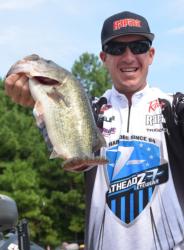
Hibdon experiments a lot, but his favorite presentation is to jerk sharply a couple of times, let the bait hang motionless for quite a while and move it with an extremely light twitch.
“Bascially, I just take the slack out of the line, and that makes the bait quiver and turn on its side,” he says. “Often that’s what triggers the strike.”
Forrest Wood Cup champion Jacob Wheeler’s general rule is to start the season with softer jerks and longer pauses and gradually to fish more aggressively and faster as the day progresses, but he’s a major advocate of letting the fish decide.
“Sometimes it’ll be the opposite of what you’d expect,” he says, “so you really have to experiment and pay attention.”
Action classes
Soft darting and rolling
Characterized by subtle, slow, side-to-side or forward movement, possibly with a bit of a roll 
“Beginning after ice-out, when the water is less than 50 degrees and the shad are slow and lethargic, I want an action that is slow, with the lure only moving side-to-side,” says Wheeler. “At that time I stick with a Rapala Husky Jerk to get that slow action.”
A Smithwick Suspending Rogue, which was the first suspender to gain popularity and the trendsetter for spring jerkbait fishing, moves more forward than side to side and with a rolling swim, but it’s similarly subtle. That signature slow roll, which excels when the water is extra cold, keeps a tremendous number of Rogues tied to lines no matter how many fancy new jerkbaits hit the market.
Darting and swimming
Characterized by darting side-to-side movements when jerked, and a swim or sideways roll with lighter twitches 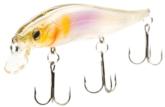
Darting, swimming jerkbaits such as the Luck “E” Strike RC STX and the Megabass Vision 110 fall into the “default” category for prespawn jerkbait fishing. Lacking unusual conditions that dictate, say, staying extra subtle or digging extra deep, these are go-to baits. Hibdon uses the RC STX for 90 percent of his jerkbait fishing.
“When you jerk it fairly hard it darts, but when you barely twitch it, it rolls onto its side and wiggles a little, which is exactly what a dying shad does if you watch it in the water,” he says.
Hard darting
Characterized by erratic, wide-ranging movements
Pros commonly toss out the terms “hard darting” and “erratic” when describing desirable jerkbait traits, and both play big into descriptions of lures such as the Strike King KVD Slash Bait Jerkbait and the Jack-it Jerk Money 120-SS. These jerkbaits dart somewhat unpredictably and cover a wide swath with short but sharp jerks, drawing fish from deeper down in extra-clear water. They also lend themselves to more aggressive presentations, which often produce when most fish are staging to move up, but others are in postspawn mode.
Tapered wiggling
Characterized by subtle movements that continue after the angler stops his rod tip 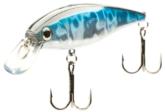
Some jerkbaits, including the Lucky Craft Pointer 78SP and Pointer 100, don’t come to a rest right at the end of a jerk. Instead they continue to move side-to-side a bit, with a slow wiggle that gradually diminishes at rest. Some anglers consider those final dance steps lethal and critical for catching fussy fish, and Lucky Craft has perfected it.
Deeper diving
Characterized by downward-diving movements 
Whether with a Smithwick Deep Suspending Rattlin’ Rogue, a Lucky Craft Pointer 78DD or a Megabass Live-X Revenge, sometimes an angler needs a jerkbait to dig just a little deeper than normal and suspend a bit farther down in the water column. Deeper divers most commonly come into play when the water is super clear – usually in smallmouth country.
Every which way
Characterized by unpredictable, erratic movements in all directions 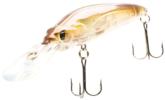
Once Wheeler gets past the earliest spring days and the water temperature climbs into the 50- to 60-degree range, he favors a much more erratic and unpredictable action.
“When the water starts warming a bit, I tie on a Rapala X-Rap,” Wheeler says. “It has a fast action and darts all over – up, down, forward, sideways.”
Other erratic suspenders such as the Damiki Longbill fit this category.
